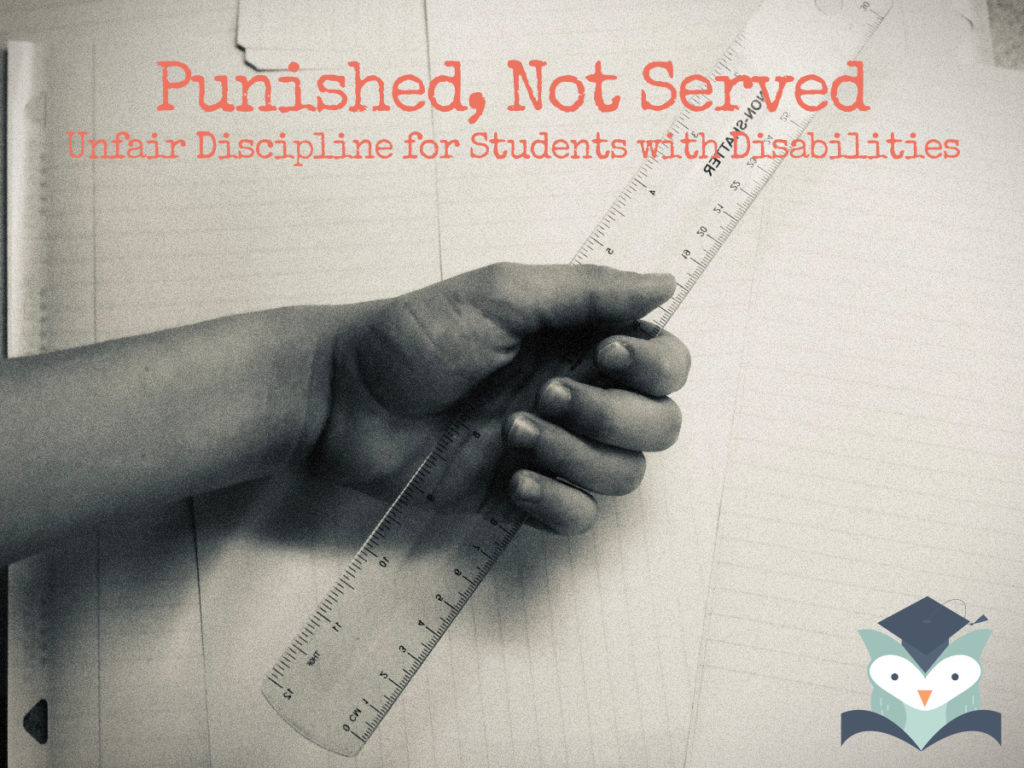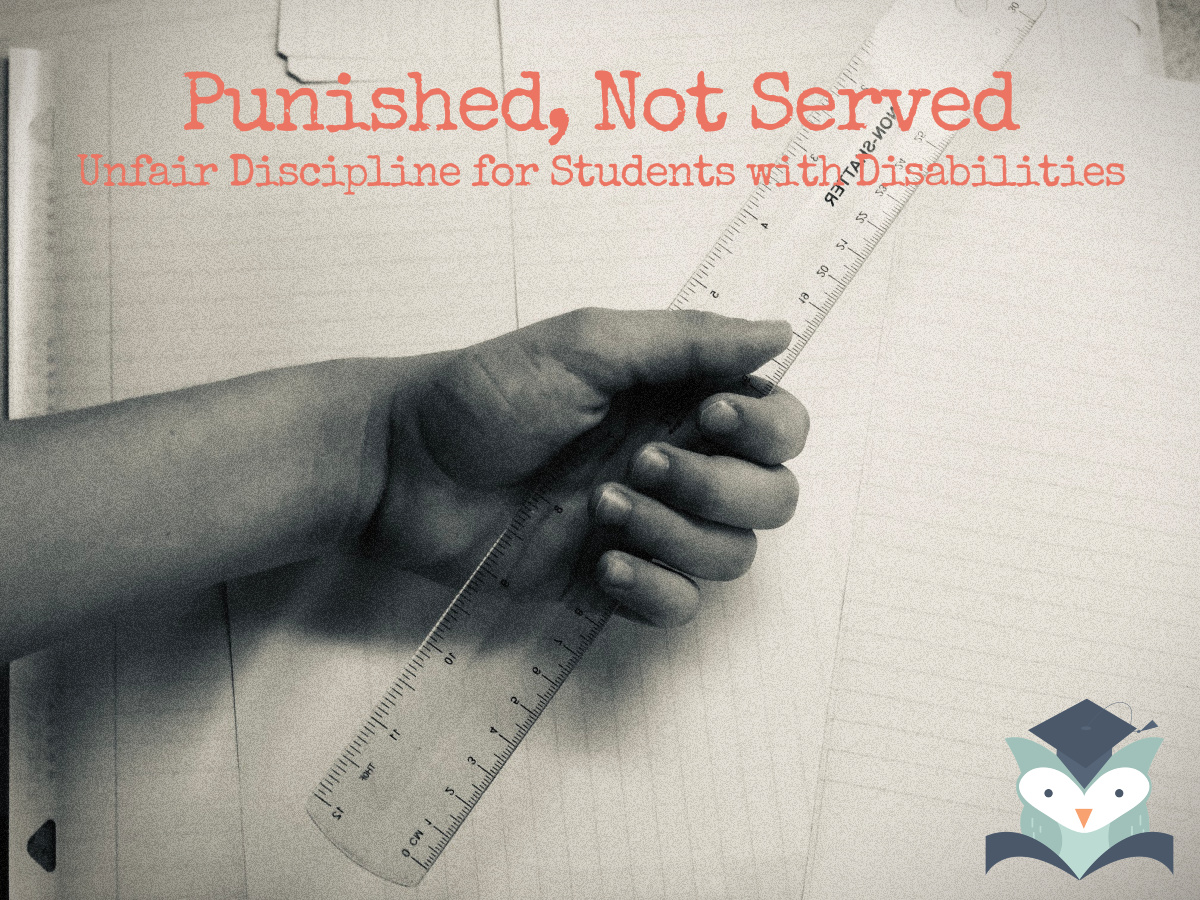Editors’ note: We are featuring the work of guest blogger Bekah McNeel, who writes on our site as Hall Monitor, in a four-part investigative series entitled Punished, Not Served: Unfair Discipline for Students with Disabilities. This is Part III.

In this installment of Punished, Not Served, we meet a mom who has been on a multi-year journey of trying to find the right school for her sons. Her story demonstrates two important points: 1) the incredible amount of subjectivity involved in SPED services, and 2) that some of the most egregious, pernicious denials of service might never even show up in the data.
Deneatra Terry is hoping for a good year. She’s hoping that this will be the year that her son is at school more than he’s home. The year she doesn’t have to file a complaint.
She knows there will be emails back and forth with her son’s charter school. She knows there will be some tinkering with his Individualized Education Program (IEP), the various supports and accommodations his school must provide through the Individuals with Disabilities Education Act. This will happen around a conference table on campus, where Terry and a small fleet of representatives from the school will go through 30–40 pages of intervention plans, getting into the minutiae of her son’s school day as they try to anticipate and avoid the triggers that have already taken so many days away from his education.
“For a long time there, he was sent home every single day,” Terry said.
All the emails, the trial and error, the meetings, the worry—that is part of parenting a child who receives special education services. There’s added complexity for Terry’s son—a black teenage boy diagnosed with emotional disturbance. When it comes to exclusionary school discipline (suspension, explosions, and alternative school) disparities, he hit the trifecta.
However, Terry’s son is largely missing from the data. Instead, he falls into a shadow population who are missing from classrooms, but not formally registered as such.
His story hints that, as large as we know Texas’s special education problems to be—they may be even bigger.
Inclusion Is Easier Said Than Done
Federal law requires that students with disabilities be educated with their non-disabled peers as much as possible. However, the same behaviors that have led thousands of students to be suspended and expelled also propel teachers to push students out of the general education classroom, to send them home or to “resource rooms” with students with the most severe cognitive and physical disabilities, even if the student is intellectually capable of learning in a general education classroom.
Teachers who do commit to guide and engage students with emotional disturbance have to be flexible well beyond conventional classroom management—further than some are willing to go. Ironically, those who do go the extra mile do so through adhering to classroom management and communication considered to be best practices by developmental researchers.
Terry chose IDEA Mays the year it opened in 2016 because of IDEA Public Schools’ reputation for success with SPED kids and children of color. Her son would be in sixth grade.
When I visited the school in April 2018, a group of parents met with me to share the great success their student had experienced while at the school. Nearly every single child represented had been previously diagnosed with either ADHD or dyslexia. The school’s rigorous approach to literacy, and the ample supports available for those struggling to read, had made a huge difference for the students. Once they were able to read on grade level, their struggles lessened. One was able to avoid what would have been an ADHD misdiagnosis.
However, Terry’s son’s needs went beyond what literacy support could provide, and hundreds of emails track how school staff continually ran afoul of their service obligations, eventually culminating in the reprimand of the school’s psychologist by the Texas State Board of Examiners of Psychologists.
Terry’s son “elopes” when he is under extreme stress, meaning he will simply start running. The day he ran out of school at IDEA Mays led to a host of other problems, Terry said. It had been years since he had eloped, and never had he made it as far as he did that day, she said. “In all the years he’s been in school, that was the first time he left the building.”
The school, unable to coax him back inside, called Terry. After that, she said, school administrators who had previously seemed invested in her son’s success, talked about him differently. They began to describe him as aggressive, disruptive, and other ways indicating that he was now a behavior problem. He was taking too much time and attention from class. The message she heard was, “You’re telling me you don’t have time for my child.”
When I asked them, school leaders expressed frustration that Terry could not seem to be satisfied, saying they had done everything they could. Terry, who had been through the legal maze twice before with other schools, maintains that it wasn’t her personal expectations, but the law that mandated the services due to her son. Under the Individual with Disabilities Education Act (IDEA, ironically), her son was entitled to an appropriate education in the least restrictive environment possible. The IEP spelled out how to make that happen.
Making a Plan—But Will It Be Followed?
With emotional disturbance and some other learning differences, the IEP will fundamentally alter the way a teacher interacts with his or her class, but possibly for the better. Some accommodations have to do with extended test time and other technicalities, but most have to do with the interactions between the teacher and student.
“Accommodations are basically good teaching strategy,” said Jennifer Fitzhugh, the special education advocate we heard from in Part I and Part II. Children with disabilities need what all children need—clear communication, security, order, choices, chances to try and fail—they just lack the tools to compensate when they don’t get it.
Complying with requests and following directions are not a yes/no, succeed/fail proposition for any child, but especially not for those with disabilities. Often the student’s Admission, Review, and Dismissal (ARD) committee will set goals of 50 to 80 percent compliance. The other 20–50 percent of the time, teachers should not punish the student for initially refusing to follow directions. Compliance is something they can practice.
In 2019, when reviewing an IEP for her son at their new charter school, Harmony School of Excellence in San Antonio, Terry stopped several times to clarify these expectations. She’s made headway with the new school, and feels they are making an earnest effort to fulfill the spirit, not just the technicalities, of the IEP.
For instance, most IEPs include that the teacher should “check for understanding,” Fitzhugh said, but this means more than asking a child “do you understand?” It means having a student repeat the instructions, or some other signal beyond “yes or no.”
Really, the IEP, when presented as a whole, is a “pretty little puzzle” that all works together to present an ideal picture of a child’s day, Fitzhugh said, “Those plans are good but nobody follows them [perfectly].”
For the most committed teachers, IEP requirements can be challenging. However, experts say it would be naive to assume that every teacher has taken the first step: belief that a diagnosis like emotional disturbance is real, and that behavior is fundamentally developmental instead of moral. In this view, kids who act bad are bad; as Fitzhugh said, “Educators still haven’t separated the child from the behavior.”
That is a hurdle no IEP can overcome.
This series, Punished, Not Served: Unfair Discipline for Students with Disabilities, has three other installments:
- Part I: Texas Data Shows Students with Certain Disabilities Are More Likely to Be Disciplined than Served—Breaking down statewide data to demonstrate how some SPED students are even less likely to be served, and more likely to be punished.
- Part II: Kids Being Disciplined for Their Disabilities—How kids who don’t “fit in the box” could land in alternative school.
- Part IV: The Battleground of Toileting—When a special education plan requires the adults to assist a child with bathroom duties, there can be resistance, shame, and missed learning time.
